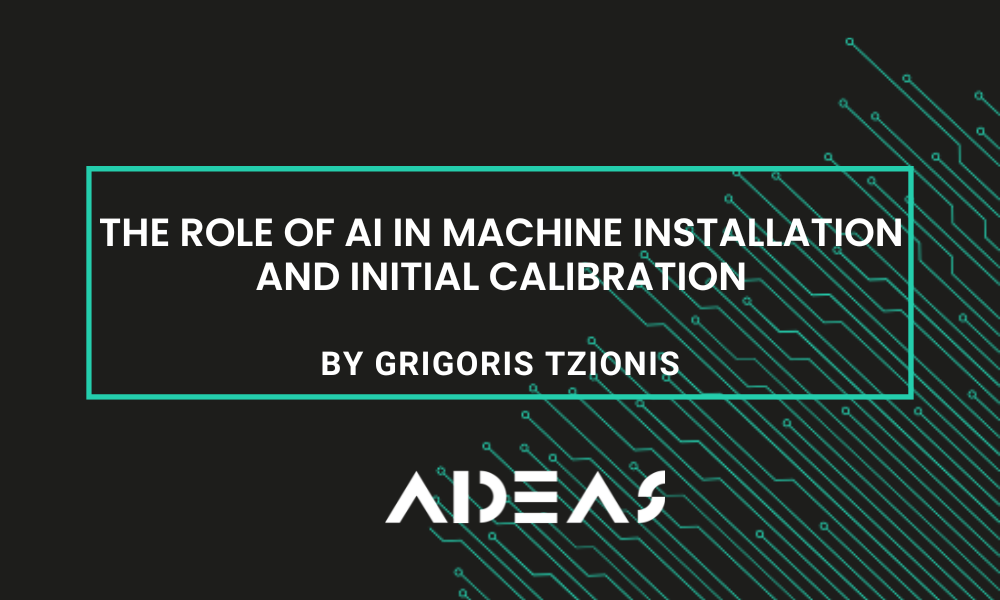The Role of AI in Machine Installation and Initial Calibration

Importance of Accurate Installation and Calibration
The installation and initial calibration of machinery are foundational to its operational efficacy and longevity. Precise installation sets the stage for a machine’s performance, safety, and compliance with industry standards. Similarly, proper calibration ensures that the machine operates within desired parameters, which is crucial for maintaining quality and efficiency. Traditionally, these processes have been labor-intensive and prone to human error, requiring significant time and resources. AI, with its ability to process vast amounts of data and learn from it, offers a promising solution to these challenges.
AI-enhanced Installation Processes
AI can streamline the installation process of complex machinery through automated planning and validation. For instance, AI-powered systems can analyze the production environment using data from sensors and other input devices to optimize the placement of machinery. This involves assessing factors like spatial dimensions, proximity to related equipment, and workflow considerations. Such systems can also simulate different installation scenarios, providing decision-makers with data-driven recommendations on how to best arrange their equipment for maximum efficiency and safety.
In robotics, AI-driven installation assistants can guide technicians through the setup process, offering real-time adjustments and advice based on the specific conditions of the factory floor. This not only speeds up the installation process but also reduces the likelihood of errors that could lead to costly downtime or hazardous situations.
Initial Calibration and AI’s Role
Initial calibration is another area where AI is making significant inroads. Calibration involves adjusting the mechanical, electrical, and operational settings of a machine so it functions at peak performance. AI algorithms excel at recognizing patterns in data that would be indiscernible to human operators. By applying these capabilities, AI can automate the calibration process, continuously adjusting parameters in response to real-time operational data.
For example, in the printing industry, AI systems can automatically adjust the pressure, speed, and ink flow of printing presses based on the type of paper used, ambient humidity, and other environmental factors. This ensures that every print run meets quality standards without the need for manual intervention, which can be both time-consuming and imprecise.
AI in Predictive Calibration
Beyond initial calibration, AI extends its utility to predictive calibration anticipating when a machine will require re-calibration. By continuously analyzing data from the machine’s sensors, AI can predict deviations from optimal performance before they affect product quality. This preemptive approach allows maintenance teams to recalibrate machines during scheduled downtimes, thereby avoiding unscheduled interruptions and maintaining continuous production flow.
Training and Feedback Loops
AI systems are not only programmed they learn. By using machine learning algorithms, AI systems involved in installation and calibration can improve over time. They analyze past installations and calibrations, learning from any missteps or successes, and adjust their models for future operations. This capability creates a feedback loop where the AI system becomes more accurate and efficient with each task it performs.
Challenges and Considerations
While the benefits are clear, integrating AI into installation and calibration processes is not without challenges. Data security, integration with existing systems, and initial costs are significant concerns. Additionally, there is a need for skilled personnel who can operate and maintain these AI systems, which implies a shift in the workforce skills requirements.
Conclusion
As industrial operations become more complex and the demand for precision and efficiency grows, the role of AI in machine installation and initial calibration becomes increasingly critical. By automating these processes, AI not only saves time and reduces errors but also enhances the performance and lifespan of machinery. This technology is not just about replacing human effort but augmenting it, allowing human workers to focus on more strategic tasks while AI handles the intricacies of machine setup and maintenance. As we advance, the integration of AI in these early stages of a machine’s lifecycle is set to redefine what is possible in manufacturing, paving the way for smarter, more responsive production environments.
Want to keep discussing this? Join the AIDEAS community and connect with over 2500 researchers, manufacturers and organizations from all over Europe.
